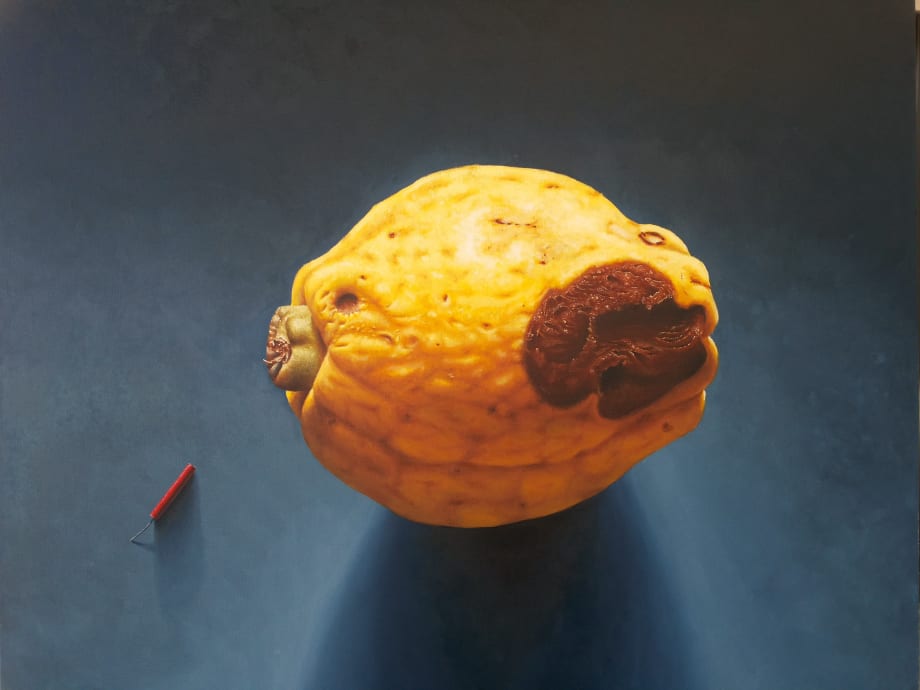Othman Moussa’s early paintings capture the often-overlooked poetics of the mundane in realist still lifes that feature humble offerings, for example a battered but polished cooking pot alongside a lone pomegranate or a rusted teapot that glimmers as its exterior catches light. Recalling the naturalism of Spanish still lifes, his initial series emphasises that which provides sustenance with reflective detail and a spiritual sense of monumentality. As the artist’s aesthetic progressed, his arrangements of inanimate objects began to take on allegorical traits, evincing subjective themes such as love and desire.
